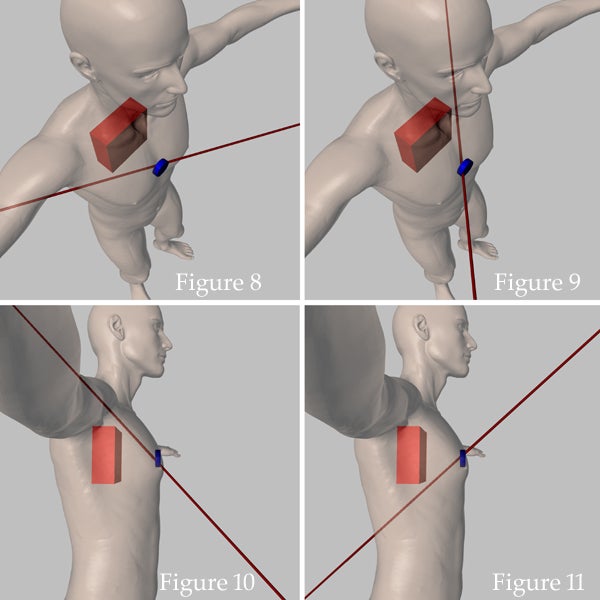Unless you are new to the topic of the defensive use of ammunition, you are probably well aware of the necessity of adequate penetration for defensive purposes. So if you already know why it is important, I’m going to beg your pardon for covering a topic that is so well known by folks in the know. But given how frequently this comes up in discussion on the forums and in the comments on TFB articles, there are clearly plenty of people out there who don’t know yet. If you are new to guns, if you are unsure of the importance of penetration, or if you just want to see my eloquent take on it, read on. If you already know, or if you’re a birdshot kinda guy with sticky elbows, you may want to keep scrolling.
When confronted with the 12″ – 18″ ballistic gelatin penetration standard recommended by the FBI, folks who are new to the topic of defense ammo understandably point out that people aren’t anywhere near 12″ thick. The heart is less than four inches deep, even in a disgusting fatbody like me, so shouldn’t 6″ of penetration be more than enough? If your assailant was made entirely of muscle tissue and stood perfectly motionless, with his arms at his sides, that might be right. But if he is a human being with a bone cage surrounding his vitals and held a weapon out toward you in his arms and if he moved as though he didn’t actively desire being shot, the projectiles you fire will have a very good chance of passing diagonally through an arm before striking the torso at an oblique angle. They may also have to pass through intermediate barriers before hitting the torso. After hitting the torso, a projectile has a pretty decent chance of hitting a rib. Bone in the arms and rib cage produces unpredictable results but it typically reduces total penetration and often causes deflection and fragmentation. So the problem isn’t penetrating a few short inches of soft tissue, the problem is that a bullet might have to pass through six inches or more of soft tissue and possibly bone before it even reaches the torso. And then it has to contend with more bone, and it may also hit the torso at an angle that requires even deeper penetration to reach the heart and pulmonary blood vessels.
This isn’t just hypothetical speculation on my part, either. The reason the FBI arrives at the penetration figures they recommend is by studying actual shootings. They found that both good guys and bad guys were often hit in the arms with bullets and that hits to the torso were often at an oblique angle as both parties maneuvered.
It’s also not uncommon for folks who are new to the topic to make the point that police shootings involve different circumstances than those that private citizens face. While it may be true that police have a higher likelihood of having to shoot someone in or around a motor vehicle, they do only have to shoot regular human beings like anyone else. The physiological necessity of causing significant damage to vital organs to bring about physical incapacitation is no different. And just because it’s a little less likely that you have to shoot someone around a car, doesn’t mean that you won’t. More importantly, the FBI recommendations involve ammunition that is tested in bare gel as well as against a variety of barriers. So, while the recommendation is indeed made for police officers, it was made while considering circumstances that you could face yourself.
While expansion, fragmentation, temporary cavity, and other factors do matter, no other factor is as important as penetration. If the bullet does not travel deeply enough in the body to reach vital organs, it cannot bring about physiological incapacitation in a timely manner. If you would like to know more about the reasoning behind the FBI’s standard, please refer to these articles:
http://www.ar15.com/ammo/project/Self_Defense_Ammo_FAQ/index.htm
http://gundata.org/images/fbi-handgun-ballistics.pdf
 Your Privacy Choices
Your Privacy Choices
